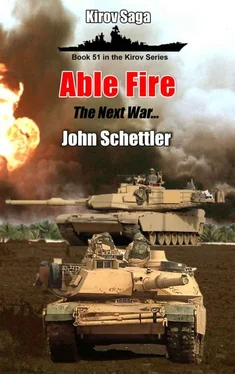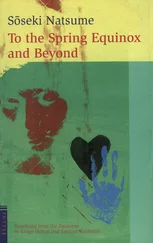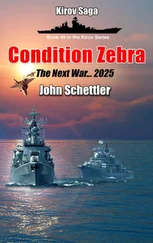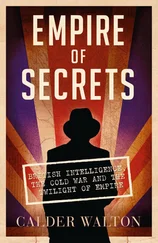“Are we planning to engage, sir?” asked Rodenko.
“Not just yet,” said Karpov. “ Enterprise will move to close the range a bit, and my guess is they will have a strike ready in the late afternoon or early evening. That’s when I’ll have work for you, Comrade Samsonov. So you can take a hearty lunch break, and get three hours sleep.”
He smiled.
“Better the Devil you know than the devil you don’t.”
― Jack Heath
Sixteenhours, thought Wu Jinlong, looking over his list of strike assets. That is a terribly long time to wait for the bombers to be rearmed. We were lucky that interval passed with the enemy carriers both still too far away to strike us. What I do now is dangerous, because the Enterprise has passed through the Makassar Strait, and is threatening my route back to the South China Sea. Yaogan-23 reveals that the Washington Strike Group is now only 350 miles north of Guam. That put them in a position to cover that island group, and their air wing augments the fighters already based there, so the defense against any cruise missile attack will be redoubled.
So what should I do? I have 36 bombers, and two thirds can carry our long range cruise missiles. That totals 126 cruise missiles, a substantial attack. The last twelve each carry a pair of YJ-100’s, a much small 24 missile strike package I can use against the American ships, but it must get within 430 miles to release those weapons.
Thankfully, the Vietnamese destroyers arrived in this interval carrying 64 of that excellent naval SCALP missile made by the French and British. I have three bases to strike, but Guam is the prize. That is where the Americans have their most dangerous assets. My first attack was ineffective, because the enemy had just enough air defense and was greatly aided by that surface action group. Now it has moved to defend Palau, positioned to easily intercept cruise missiles coming from the bombers. Yet if my naval strike fails to destroy that base, I still have the Flying Leopards at Davao.
I could combine all my strike assets to destroy Yap and Palau, but that would just buy us time—time for the bulldozers and tractors to repair those fields. So I will throw the weight of my War Gods at Guam, and then see what I can do against the smaller bases with the Naval Strike Missiles. I will commit all 64 SCALP’s against Palau, and the two dozen YJ-100’s will strike their ships as a distraction. That attack can be further strengthened by twelve DF-21C ballistic missiles from Hainan. Yap is the smallest base, and perhaps six bombers could deal with that. That will be the order. The bombers are about 45 minutes from their release points, so we wait….
13:00 Local, 18 JAN 2026
SAG Guam
SurfaceAction Group Guam was composed of five ships, led by the powerful CG-21 class cruiser San Jacinto under Captain Allan Shill, with destroyers Buford and Chamberlain , and two of the new FFG (X) Class frigates, Rabaul and Rendova . They had already helped a great deal in the defense of the US island bases, and now they were standing the watch about 100 miles west of Palau.
But they weren’t going to just sit there and wait.
SAG Guam had a couple dozen TacToms, and another 152 Multi-Mission Tomahawks, which they preferred to keep for surface warfare operations, so Captain Shill decided to try and shake up the airfield at Davao. The battle for the airfields was what this was all about. Those two dozen Toms were soon away, painting a new artificial cloud around the TF as they fired.
The Tomahawks soon crossed the coast of Mindanao, and were hugging the mountainous terrain as they weaved a path through the highlands towards Davao. A scramble order went out and six J-20’s were lifting off the airfield minutes later. With the leading Toms just 24 miles out, an HQ-9A battery set up on the peninsula near the harbor was already firing as they took off. The fighters stayed at a relatively low altitude, switched on radars, and went hunting. The PL-15 would prove to be very adept at finding and killing the lumbering Tomahawks, and not one would survive to strike the base.
So the base was well defended, as the Chinese had delivered two HQ-9A batteries, and there were 20 fighters there. The six that had scrambled were enough to take down all but one Tomahawk. The last was a sleeper, taking a wide ranging course, and actually was not spotted on radars until it was very close. By this time, all six fighters had already returned to base, but one plane was ready on a tarmac close by the runway, and got a quick scramble order. It would not have time to get airborne before the missile came in, falling right into open parking where it destroyed two J-20’s. That was it, 24 missiles, 23 dead so that the last could get in there and kill two fighters on the ground. It wasn’t much, but it was at least something.
At that same time, a scythe of YJ-100 Chinese cruise missiles were already on their way towards the American ships, but no US assets had detected them, nor any of the 12 bombers that fired them. At 14:00, the first of the air-launched YJ-100’s was spotted on radar by San Jacinto , and the TF opened defensive fire. The 24 cruise missiles were not a significant threat, as SAG Guam was sitting with over 200 ESSM’s, and 62 SM-6. So here the defense would easily prevail, and none of the Vampires even got close enough to a US ship to break the horizon.
About that same time, Vampires were finally building up on the radar screens far to the north. It was the leading edge of a great boomerang shaped missile wave that had been fired by the Gods of War at Guam, 300 miles wide. The northern end of that missile storm would pass very near Carrier Strike Group Washington , and would likely pay heavily, but this had been a deliberate move on the part of the Chinese. On radar, it would look like this was an SSM strike against the carrier, and that would likely see the American fighter defense scramble to engage it there, while as far as 300 miles to the south, many more Vampires were making their sedate journey toward the Marianas, hopefully out of sight and harm’s way from planes off that American carrier.
The carrier was under the command of Captain James Rayburn, who had taken over from the man that Karpov once dueled with when he fought that flattop in another time, Captain Tanner.
“Sir, Hawkeye-1 reports Vampires, bearing 260 and 310 miles out. Low and slow, sir.”
“Cruise missiles,” said Rayburn. “Those had to come off the bombers at Clark. Air force was going to hit that base, but it takes 20 hours to rig out the bombers on Guam. Those Vampires vectoring on us?”
“Sure looks that way, sir.”
“Very well, send in the morning patrol, and scramble the ready CAP behind them.”
“Aye sir.”
Seconds later, those orders went out. “Bright Eyes this is Bertha. Vector 260 and engage Vampires low. You are cleared Hot. Over.”
Six F-35’s had been tasked with CAP patrols that day. Three were already up, Bright Eyes, and more would join them. The rest of the Panthers were rigging out for strike or escort duty, but the Captain still had a dozen more Hellcats ready for CAP if he needed them. As the seconds passed, the red wave just got bigger and wider.
“How many contacts?” asked Rayburn, a slim, grey haired man, always dapper and trim in his uniform.
“Sir, presently reading 65 Vampires.”
“Move six Hellcats to ready CAP. Then signal all ships to go to battle stations missile. That’s a significant strike.”
Читать дальше












